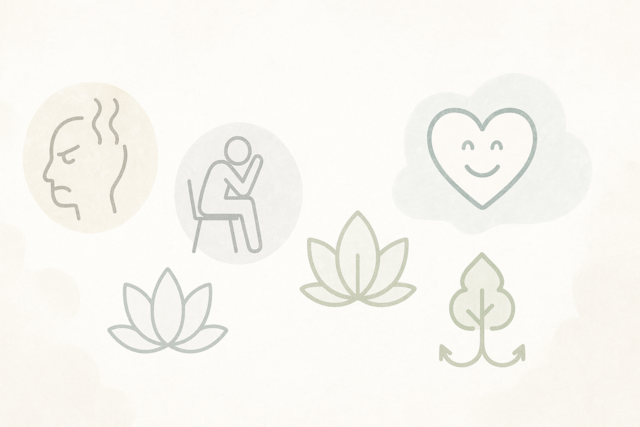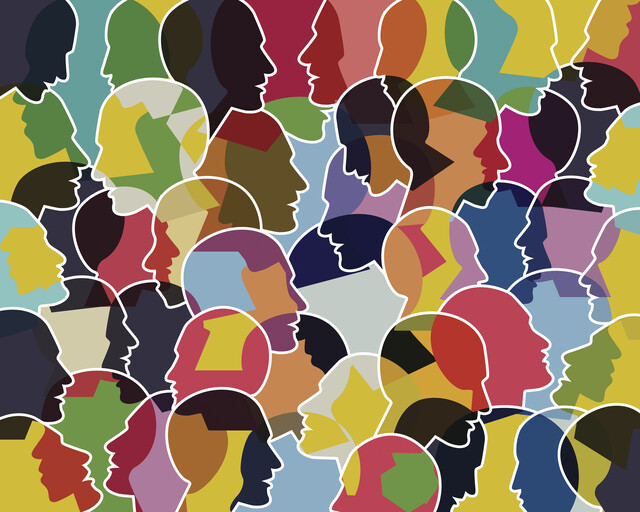The nature of some forms of harassment can also influence other forms and instances of harassment. Rather than being a particular form that can also occur in tandem with instances that are primarily retaliation or hostile environment types, they can also exist on their own and have as much of a role to play as the form it is paired with. That is a possibility when it comes to discrimination, which can exist on itself, as its own from of harassment, or as a contributor to other kinds of harassment. Like with sexual harassment, it is highly prevalent in both society and the workplace, and is at times even normalized.
This article will look at the different types of discrimination that are possible. These are particular areas or demographics that may be the basis or motivation behind an instance of harassment. Each topic will explain what it is, how common discrimination in that demographic is, and what can be done to help prevent it from happening. Keep in mind that these are the general demographic areas in which discriminatory harassment occurs, and is not a finite list.
What Is Discrimination?
Discrimination is defined as treating a person differently based on some facet of their identity (e.g. race, gender), usually in a negative manner.1 This can include viewing and treating members of a specific demographic based upon stereotypes or misconceptions, purposely treating them as less than others, and denying them the same rights and respects as given to their peers. In the workplace, discrimination can impact not just the general treatment of a person while at work, but may involve denying them employment, benefits, or opportunities.2 Many people who harass others in the workplace in a discriminatory manner are discounting their victims as equals and are focusing on a particular part of their identity.
As a harassment form, discrimination serves as the reasoning behind the action taken by the harasser against their victim. Offensive comments or statements (e.g. slurs), jokes, imagery, or other behaviors and conduct that is considered unwelcome or inappropriate. Under law, discrimination of any kind in the workplace is illegal; there are numerous federal level, as well as state level, laws and regulations prohibiting any discriminatory behavior in the workplace that detail employees' rights in those instances.3 Some of those laws include:
- Title VII of the Civil Rights Act of 1964-Prohibits discrimination based on elements of religion, race, sex, color, and national origin, and is applicable to any employer with 15 employees or more.
- Pregnancy Discrimination Act (PDA)-Part of Title VII that adds pregnancy, childbirth, and any other related medical conditions to the prohibited discrimination list.
- Equal Pay Act (EPA)-Prohibits any pay discrimination based on gender (men vs. women) for the same position or working conditions.
- Family and Medical Leave Act (FMLA)-Prohibits discrimination against employees with serious medical conditions (e.g. pregnancy) that may interfere with their work. This includes employees who have family members with serious conditions that they may need to help care for.
- Americans with Disabilities Act (ADA)-Prohibits discrimination against employees with actual or perceived disabilities, or employees with disabled relatives.
- Age Discrimination in Employment Act (ADEA)-Protects employees age 40 and older from being discriminated against due to their age. Applicable to employers with 20+ employees.
Race
Disproportionate or less than favorable treatment of a person based upon their race or skin color is considered racial discrimination. It is usually divided into two forms4:
- Disparate Treatment Discrimination-The intentional singling out of a person of a particular race and treating them less favorably than others. Applicable to potential or current employees, as well as customers/clients on some occasions.
- Disparate Impact Discrimination-Instituting or applying a policy or practice that should be equal, but places undue burden on employees who are of a certain race.
Racial discrimination can be difficult to identify in some cases, as it can be subtle and victims may not be able to tell that they are being discriminated against unless they compare their treatment with their peers of a different race.5 As racism is so ingrained in to parts of society as microaggressions-prejudiced comments and behaviors that are unintentional or done unconsciously-it is possible for a person to not realize that their actions are racially discriminating or harassing.6
Statistically speaking, the EEOC recorded 32,309 charges of race-based instances of discrimination and harassment in working environments in 2016.7 Based on the EEOC's data, instances of workplace racial discrimination have only risen in recent years. This may be due to a normalization of racial and/or cultural stereotypes that may influence people's views about certain races, racist behavior and conduct that isn't discouraged at work, and general intolerance and disrespect regarding aspects of race.8
Gender
Gender-based discrimination has long been a part of workplace harassment, and is one of the most common forms of harassment and discrimination today. Sexist stereotypes and beliefs still persist, and they create unnecessary division and conflict between men and women in the workplace.9 Many instances of gender discrimination and harassment are tied to traditional views regarding femininity and masculinity, like female employees being in a secretarial role rather than an executive one.
Although women are heavily affected by gender discrimination-to the point where it's stereotypical for women to be victims of gender discrimination or harassment-men can also be victims, albeit in different ways and not to the same frequency.10 Likewise, both men and women can be harassers, and harassment can occur between a victim and harasser of the same sex rather than opposite.
There were 26,934 reported charges of workplace gender or sex-based discrimination in 2016, according to the EEOC.11 That data does not differentiate between male and female perpetrators or victims, or the details of the discrimination. Gender discrimination is often tied to sexual harassment, so it is possible that there are cases that are found in both sets of data or that were never reported to the authorities.
Age
Age-based discrimination and harassment can happen to any age group, although there are some that experience it more often than others. Most of the protections in place are for older groups, as many cases involve victims who are in their forties or older.12 It is thought that workers as young as their mid-thirties are less appealing than their younger counterparts; the expense of training and employing them (e.g. salary) and the less time they have before retirement age are often cited as the main reasons. Younger employees, while they can work longer and can be paid less than their older peers-a view that can be interpreted as discrimination itself-can be discriminated against due to their inexperience and associated risks. It's not as frequent of a form of discrimination as some of the others listed here-the EEOC reported only 20,857 in 2016-although rates have been increasing.13
LGBT or Sexual Orientation
Reports of discrimination against employees based on their sexual orientation have increased in recent years-1,768 charges in 2016 compared to 808 in 2013.14 The LGBT community-LGBT stands for Lesbian, Gay, Bisexual, or Transgender, although it includes all kinds of sexual orientations-has been growing in the public eye as more people are becoming comfortable with being out. This may be why discrimination cases are increasing, even though they may not necessarily be advertising their orientation to their co-workers or employers and only about 4% of the workforce in the US are out.15
Certainly stereotypes, homophobia, and general misinformation play a significant role in LGBT discrimination in the workplace. There is also a severe lack of legal protections in place for the LGBT community, although a court ruling recently stated that the Civil Rights Act prohibits LGBT workplace discrimination.16 About 40% of LGBT discrimination victims are estimated to have been discriminated against purely due to their orientation. For the transgender community, the numbers are even higher-97%--for their transgender status. The data, again, is only on reported cases and may also include instances of where a person was perceived to be LGBT.
Mental or Physical Health
Discrimination regarding an employee's health frequently involves aspects of disability, mental state, and physical conditions like pregnancy. Some employers believe that certain health conditions can interfere with an employee's ability to effectively do their work, which can contribute to decisions to hire them, retain their employment, or assign them certain duties and responsibilities. There is also some expense in employers making accommodations for employees with certain conditions-like physical disabilities-that may cause them to discriminate against them.17
Most health-related discrimination instances are documented as disability discrimination or pregnancy discrimination. 2016 rates showed that there 28,073 charges for disability discrimination18 and 3,486 charges for pregnancy discrimination19. Disability discrimination may, strangely, make sense due to its prevalence and the prejudices and stereotypes that exist regarding what disabled workers can actually do in the workplace. Pregnancy discrimination, on the other hand, occurs largely because it is seen as an inconvenience for employers when their female employees become pregnant and need to take time off for it.20
Religion
Religious discrimination can happen when there are conflicting religious beliefs and practices present in a business' workforce. Stereotypes and misconceptions regarding different religions can cause issues for employees of a particular religion, especially if they are in the minority at work (e.g. someone who is Muslim in a largely Christian workforce). Prejudices towards other religions can cause discriminatory actions amongst co-workers. Religious practices and observances can interfere with a person's work schedule, which may make employers discriminate against employees who are of a different religion than they are.21 By law, employers need to allow for any accommodations needed for employees to practices their religious beliefs and observances, including breaks and scheduling changes.
Religious discrimination has increased over the years, but it's been more gradual than you would think. The EEOC reported that there was a spike in religion-based discrimination charges in 2011 (4,151 charges), but that did decrease in the following years and has only started to go back up in 2016 with 2,825 charges reported.22 Whether this is due to an actual decrease in incidents of religious discrimination or just a decrease in reporting is unclear. It should be noted that the data does not differentiate between cases relating to a specific religion being discriminated against.
Political Beliefs or Affiliation
Politics is always a heated topic, so it's not surprising that things could escalate to discrimination and harassment when there is conflicting political beliefs or affiliations in the workplace. This can be especially so during election years, as tensions can be higher than usual. It's technically a bit of a gray area as there are no clear federal protections against workplace discrimination based upon politics, but there may be state-level laws in place.23 Most employers are fine with workers expressing their political affiliations at work so long as it does not interfere with their duties or cause harm towards others.
It is possible that political discrimination could be protected under harassment laws as a retaliation case, although it is not very well protected under anti-retaliation laws.24 Those who are in public service (government jobs, law enforcement, etc.) are explicitly protected as it constitute as the government suppressing their right to free speech. Only certain states, and even some cities, have specific laws based on retaliation for political beliefs or affiliations that are applicable for non-government employees. If your political beliefs or activities are causing a problem or interfering with your ability to do your work-e.g. being late to work because you were at a political rally) and your employer punishes you, then it wouldn't be considered discrimination.25
Ethnicity or Country of Origin
Occasionally grouped with racial discrimination, discrimination based upon a person's ethnicity or country of origin can occur as a separate issue in the workplace. Culture, ethnicity, and race do not always equal the same thing, and it is possible that discrimination can occur due to one but not the others. Immigrants are particularly at risk for ethnic discrimination in the workplace, especially with the recent discussions surrounding immigration. The discrimination can be based not just on where they were born or immigrated from, but their language and ability to speak English, cultural practices, and accents.26 Like with religious discrimination, ethnic or national-origin discrimination surged in 2011 at 11,833 reported charges and has dropped to 9,840 charges in 2016.27 Again, the data is unclear as to what specific ethnicities were discriminated against and what the nature of the discrimination was.
























